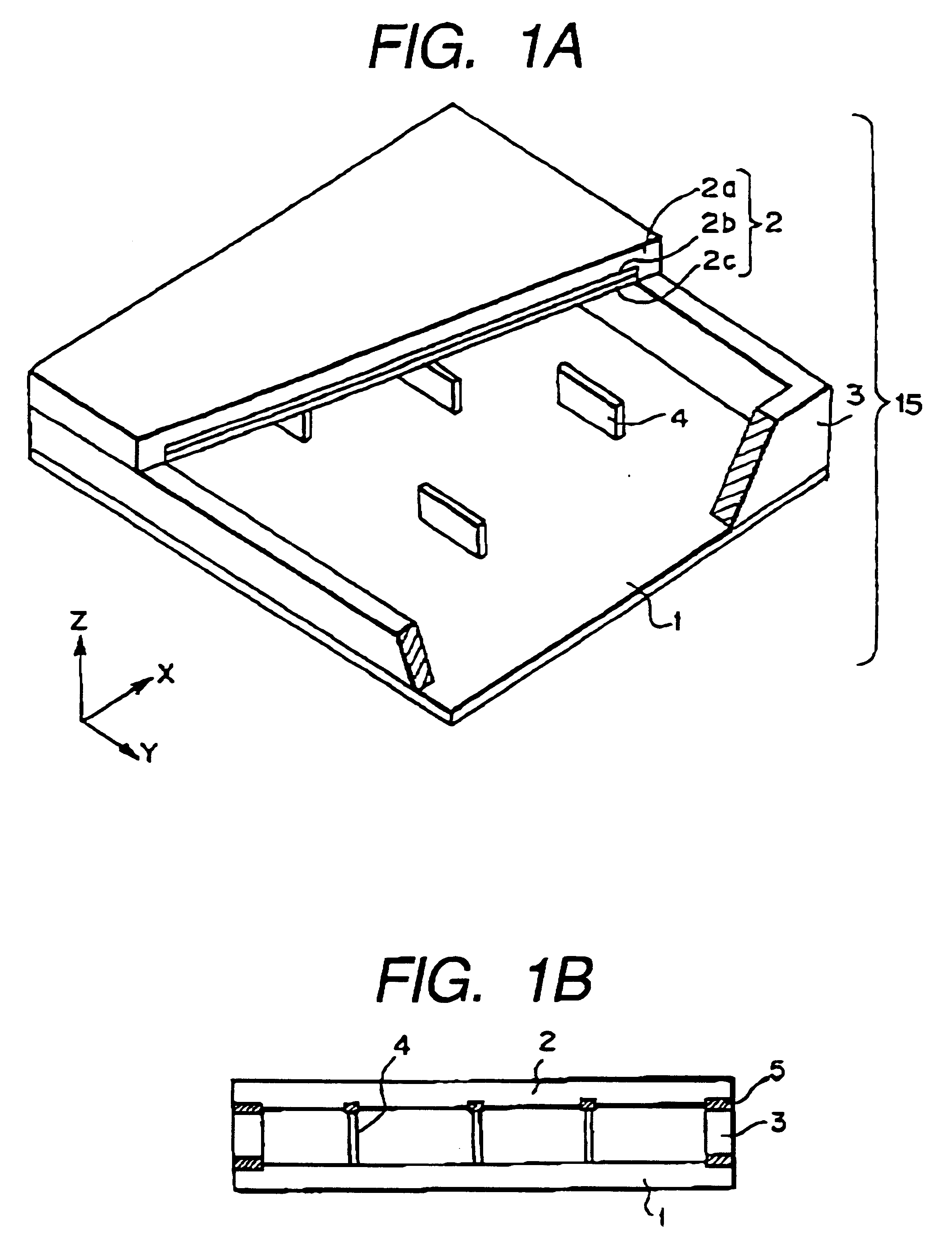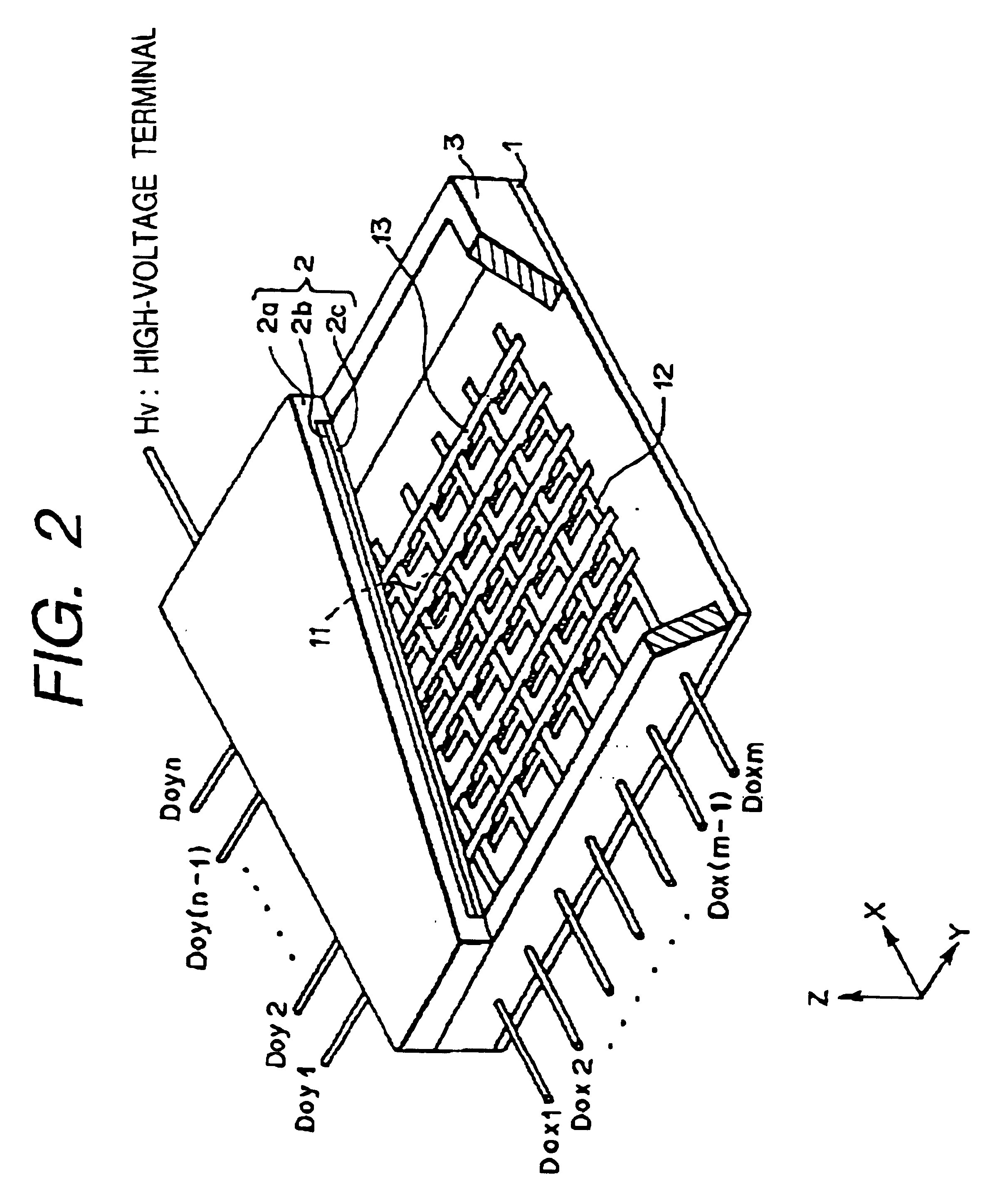Image display apparatus, disassembly processing method therefor, and component recovery method
a technology for displaying apparatuses and components, applied in the manufacture of electric discharge tubes/lamps, identification means, instruments, etc., can solve the problems of shortening the capacity of disposal sites, unable to provide drainage facilities, and not being equipped with drainage facilities on sites. , to achieve the effect of preventing second-degree damage by pieces of destructed members
- Summary
- Abstract
- Description
- Claims
- Application Information
AI Technical Summary
Benefits of technology
Problems solved by technology
Method used
Image
Examples
embodiment 1
of the present invention will be described in detail below with reference to the accompanying drawings. This embodiment will exemplify disassembly processing for an FPD which incorporates spacers and has a fluorescent screen on the inner surface of a face plate, as shown in FIGS. 1A, 1B, and 2.
In FIGS. 1A and 1B, reference numeral 1 denotes a rear plate; 2, a face plate; 3, a frame; and 4, spacers. Lead-containing frit glass 5 is used at each joint portion between the rear plate 1, the face plate, and the frame 3 that is shown in black in FIGS. 1A and 1B.
The spacers 4 are bonded to either one of the face plate side and rear plate side, or the two sides with frit glass or the like. In this embodiment, the spacers 4 are bonded to only the face plate side. Examples of the materials of the rear plate, face plate, and frame are silica glass, glass containing a small amount of impurity such as Na, soda-lime glass, and glass prepared by stacking a silica layer on soda-lime glass. On the fa...
example 1
The present invention will be described in detail by way of Example 1 with reference to FIGS. 1A and 1B to 4.
example 1-1
A surface-conduction type electron source display (SED) of matrix driving scheme as shown in FIG. 2 was disassembled. This SED has a panel structure containing spacers as shown in FIG. 1.
In accordance with the flow chart of disassembly processing for an FPD device in FIG. 4, the SED was extracted from the housing of the SED device, and accessory wiring lines and terminals were removed. Then, the vacuum in the SED was canceled, and the exhaust pipe was detached. The exhaust pipe was processed and reused as lead-containing glass.
The SED was image-sensed with a video camera, and its image was captured by an image processing apparatus. A region of the image where frit glass was applied can be recognized as a darker region than the remaining portions. The image was binarized to measure the area of the region where frit glass was applied.
Disassembly pre-processing steps (1) to (5) were executed. The flat panel display was removed from the housing of the flat panel display apparatus, and t...
PUM
| Property | Measurement | Unit |
|---|---|---|
| Electrical conductor | aaaaa | aaaaa |
| Wave | aaaaa | aaaaa |
| Internal pressure | aaaaa | aaaaa |
Abstract
Description
Claims
Application Information
 Login to View More
Login to View More - R&D
- Intellectual Property
- Life Sciences
- Materials
- Tech Scout
- Unparalleled Data Quality
- Higher Quality Content
- 60% Fewer Hallucinations
Browse by: Latest US Patents, China's latest patents, Technical Efficacy Thesaurus, Application Domain, Technology Topic, Popular Technical Reports.
© 2025 PatSnap. All rights reserved.Legal|Privacy policy|Modern Slavery Act Transparency Statement|Sitemap|About US| Contact US: help@patsnap.com



